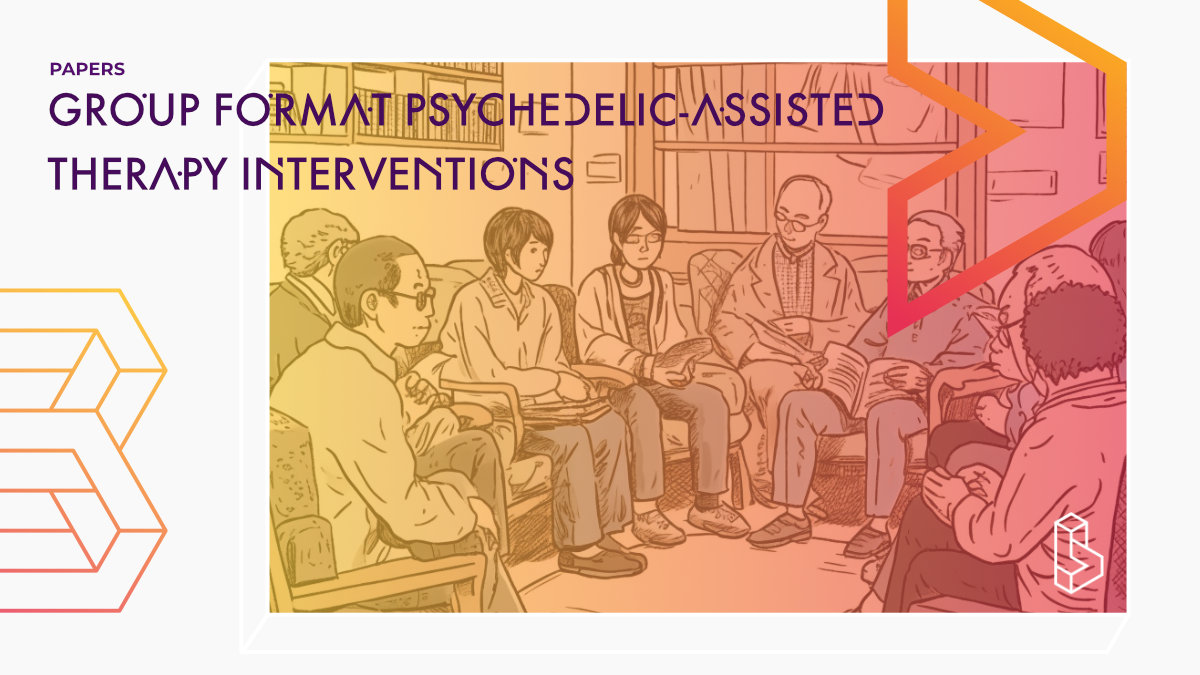This qualitative survey (n=10) from patients who underwent psychedelic-assisted therapy (PAT) with psilocybin (25mg) for depression associated with a cancer diagnosis (HOPE trial) provides information on group format PAT, which participants rated highly.
Abstract
“Background Psilocybin-assisted psychotherapy has demonstrated significant promise as a treatment for depression, anxiety, and existential distress associated with serious medical illness and has generally been employed on an individual basis, which presents challenges for scaling and resource availability. There are also compelling theoretical reasons to suggest that group-based formats-if utilized in a thoughtful fashion-might offer unique or enhanced therapeutic benefits for certain conditions or populations. The HOPE trial is an IRB-approved open-label feasibility and safety pilot study of psilocybin enhanced group therapy in patients with a DSM-5 depressive disorder associated with a cancer diagnosis completed at the Huntsman Cancer Institute (HCI) in Salt Lake City, Utah (HOPE: A Pilot Study of Psilocybin Enhanced Group Psychotherapy in Patients with Cancer). We report here qualitative survey-based data, impressions, and suggestions for group-based psychedelic-assisted therapy interventions based on our observations to inform future studies.
Methods Patients with a DSM-5 depressive disorder with an underlying cancer diagnosis were recruited from HCI by referral from oncology providers, palliative care, and social work. Following screening and consenting, 4-6 participants per cohort (with three total cohorts) were enrolled in a protocol involving 3 120 min group preparatory sessions, a single high-dose (25 mg) group psilocybin session, and 3 subsequent group integration sessions. Primary clinical outcomes are still in process of data collection and analysis. Qualitative data was gathered from patient written reports and a survey administered at 2 weeks post intervention. Qualitative reports were also gathered from the therapist team at a post-study group process session.
Findings We report here results from a qualitative survey of participant experiences with group format study design, as well as impressions and guidelines for group format and group psychotherapeutic process to inform other studies pursuing group-based interventions in psychedelic therapy. Suggestions are provided for protocol design, screening processes, space considerations, therapist team structure, group process, music, timeline, as well as potential issues and challenges.“
Authors: Benjamin R. Lewis, Kevin Byrne, John Hendrick, Eric L. Garland, Paul Thielking & Anna Beck
Summary of Group format psychedelic-assisted therapy interventions
For centuries, group format classic psychedelic administration within a ritualized, culture-bound framework has been used for religious/spiritual purposes. This includes traditional Mazatec communal rituals with psilocybin-containing mushrooms and group-format ayahuasca ceremonial traditions in Central and South America.
The current model of psychedelic-assisted therapy involves individual preparatory sessions, 1 – 3 individual psilocybin sessions, and subsequent individual integration sessions with two therapists present for the duration of these encounters.
Recently, two trials have been published employing variations of the group format. These studies suggest possible benefits gained by group formats; however, neither employed a group-format psilocybin session.
Find this paper
https://doi.org/10.1556/2054.2022.00222
Open Access | Google Scholar | Backup | 🕊
Cite this paper (APA)
Lewis, B. R., Byrne, K., Hendrick, J., Garland, E. L., Thielking, P., & Beck, A. (2023). Group format psychedelic-assisted therapy interventions: Observations and impressions from the HOPE trial. Journal of Psychedelic Studies.
Study details
Compounds studied
Psilocybin
Topics studied
Depression
Palliative Care
Study characteristics
Original
Open-Label
Survey
Participants
10
Humans
Institutes
Institutes associated with this publication
University of UtahResearch with psychedelics is underway at the University of Utah. At the university, researchers are working with the Usona Institute exploring psilocybin-assisted group therapy in patients with cancer.
Compound Details
The psychedelics given at which dose and how many times
Psilocybin 25 mg | 1xLinked Research Papers
Notable research papers that build on or are influenced by this paper
HOPE: A Pilot Study of Psilocybin Enhanced Group Psychotherapy in Patients with CancerThis open-label study (n=12) investigates the potential of psilocybin-assisted group therapy (PAT) in cancer patients suffering from depression. Participants underwent preparatory sessions, a high-dose (25mg) psilocybin group session, and integration sessions over three weeks, with clinical outcomes measured at baseline, two weeks, and 26 weeks post-intervention. Results show significant decreases in depression symptoms and no serious adverse events, suggesting safety, feasibility, and possible efficacy of the therapy.
Linked Clinical Trial
Study of Psilocybin Enhanced Group Psychotherapy in Patients With CancerThis open-label interventional trial (n=12) explored the feasibility of offering psilocybin therapy in a group setting to patients with cancer. The study aimed to decrease the therapist-to-subject ratio, implementing a 1:1 ratio with a group size of six patients.

